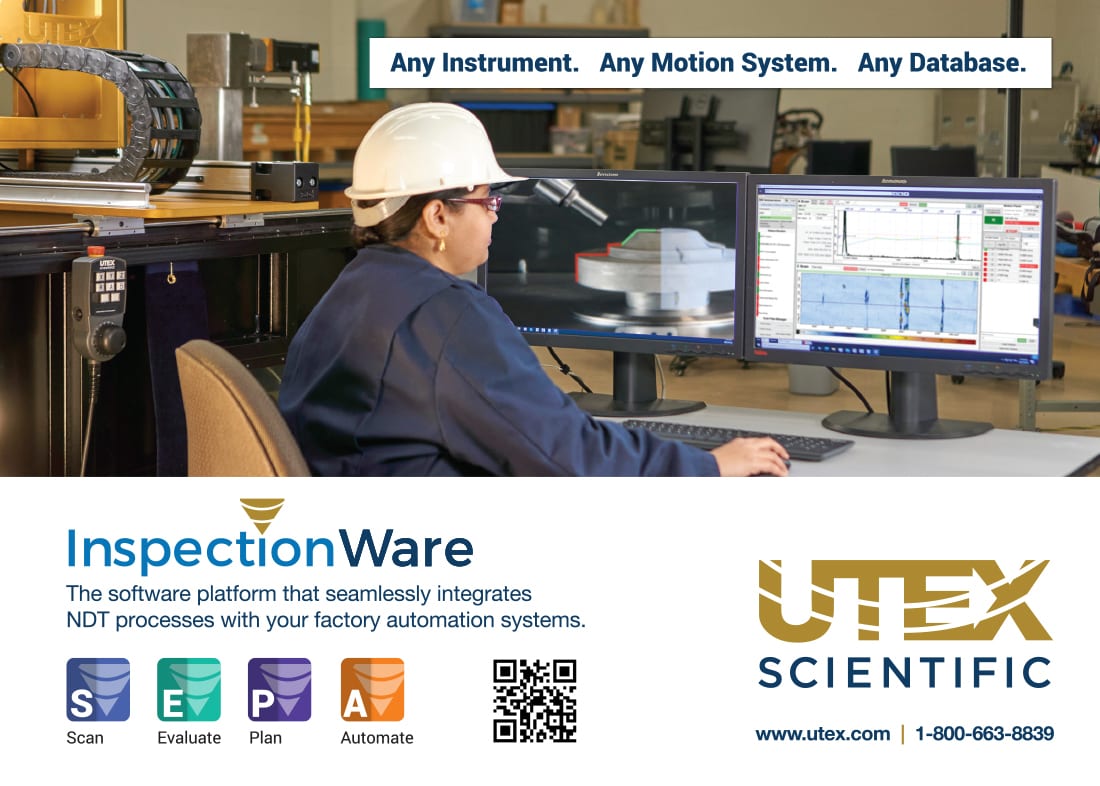Training
Inspection
NDT
Nondestructive Testing Training
There are many topics related to NDT training that might be confusing for anyone hoping to work in this field.
By Tash Baksh
A gang of welders sets up a mechanical system and begins welding a joint. The welder must make several passes to finish several welds. Visual inspection, which is only capable of detecting surface breaking indicators, is the main method utilized to verify each pass quality.
The welding apparatus is taken out once all weld passes are finished. Afterwards, the final weld joint will be inspected by an NDE team. The weld may need to be repaired if the NDE inspector(s) finds an issue with it. The welding team will then have to go back and remove the defect, sometimes several passes deep, reinstall their welding system, and perform a weld repair. This cycle of weld repair followed by NDE is repeated until the weld passes all inspections. How is the nondestructive examination (NDE) team qualified and certified to perform this task? Let’s talk about it.
There are many topics related to nondestructive training, or NDT training, which might be confusing for anyone hoping to work in this field. Remuneration, paperwork, and examination are among the many subjects that are publicly debated in both online and offline forums. However, certification and qualification are two words that most people intending to enroll in NDT training are confused by.
If we look at a couple of fundamental definitions of the two terms, things will appear to be much clearer.
While qualification combines formal schooling, testing, and training with subsequent relevant job experience, certification resembles more of a written statement made by the employer. According to the testimony of the Certifying Authority, the applicant has developed expertise in a certain testing technique and has complied with all training and experience criteria set forth by the company.
Training, testing, and experience are the three most fundamental steps in the qualification process for nondestructive testing. The inspection team is given all the knowledge and instruction necessary for a certain procedure. They must next take exams and receive a high mark to secure their future in NDT. For instance, you will need to pass exams in the same discipline if you apply for a course in dye penetrant testing. The next step is experience, and candidates must become familiar with the testing procedure firsthand while working closely with a trained inspection specialist. Experience is crucial since it opens doors for employment in big businesses.
On the other hand, external certification is more advantageous for seasoned experts because it enables them to improve their abilities and strategies in a certain manner of inspection. This appears to be very beneficial for clearing the way to the expert zone and obtaining greater compensation packages. In order to attract the interest of numerous businesses in this field, students who have just completed an organized education program can also apply for these courses at nondestructive testing institutions.
Although certification and qualification fall within the category of nondestructive testing, they are related but are two distinct skillset aspects. Your decision in which to choose will mostly be influenced by your level of knowledge and experience.
If this is an area that you or someone you know may consider, it can be approached with a high school diploma or equivalent. The key competencies are understanding and using machines or tools, good communication skills, dependable, and strong work ethic. Physical demands of the job include ability to lift and carry up to 50 pounds, ability to work both inside and outside environmental conditions and possibly standing for extended periods of time.
As noted previously, there are three main steps:
- 1) Formal Training - You will learn the fundamental theory and implementation of the under study NDT method on actual applications of each technique in these classes.
- 2) For each procedure, the following three test results are necessary for NDT Certification:
• General Test: A quiz on fundamental concepts that includes the method’s theory
• Specific Test: your ability to read and comprehend a nondestructive method.
• Practical Test: A hands-on examination to demonstrate your proficiency in using the technique to test samples or real work materials. - 3) On-the-Job Experience and Training (OJT) Once you are employed by a company, they will keep track of your time on the job while performing specific NDT tasks. The company is Certifying Authority and responsible for verifying your qualifications and documenting your NDT hours prior to issuing an actual NDT certification. In order to achieve this portion of your NDT certification requirements, you must be employed by someone, doing NDT work in the field. In order for the hours to qualify, they need to be documented based on the method of NDT that you are performing. For example, if you work a 10-hour day and do a little magnetic particle, some hours of liquid penetrant, and a few hours of visual inspection, you cannot document 10-10-10 for MT-PT-VT. That would be a 30-hour day! Instead you would document accurately – two hours MT, four hours PT, and four hours VT. You can accrue hours for more than one method at a time, but the hours must be kept track of separately.
If you wish to become externally certified, you will need to prove these hours if you want to fulfill ASNT or ACCP Professional Certification requirements.
References
Wright, M. (2022) “Merging Automated Welding + Nondestructive Examination,” Inspection Trends, August, p. 21.
Image source: Getty Images
Ian R. Lazarus is president and CEO of Creato Performance Solutions, providing leadership development, training, and solutions to support operational excellence.
Jim L. Smith has more than 45 years of industry experience in operations, engineering, research & development and quality management.


